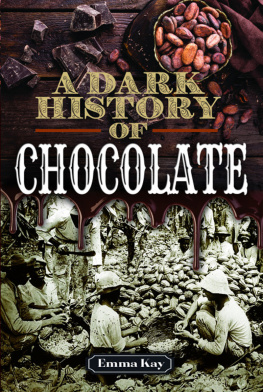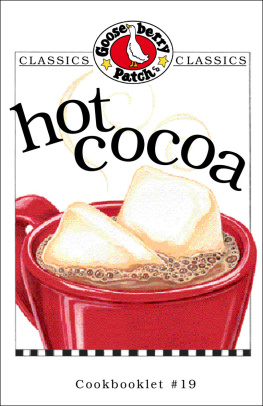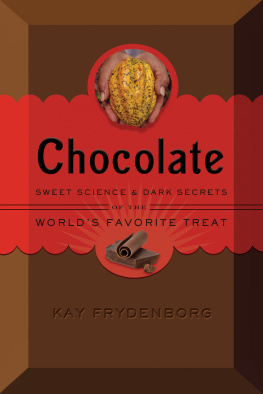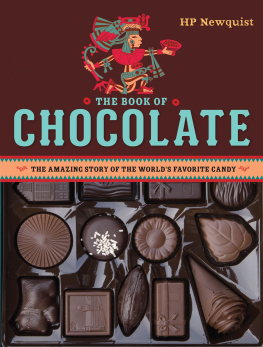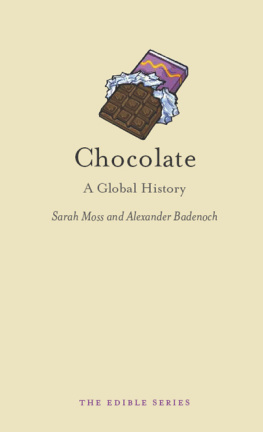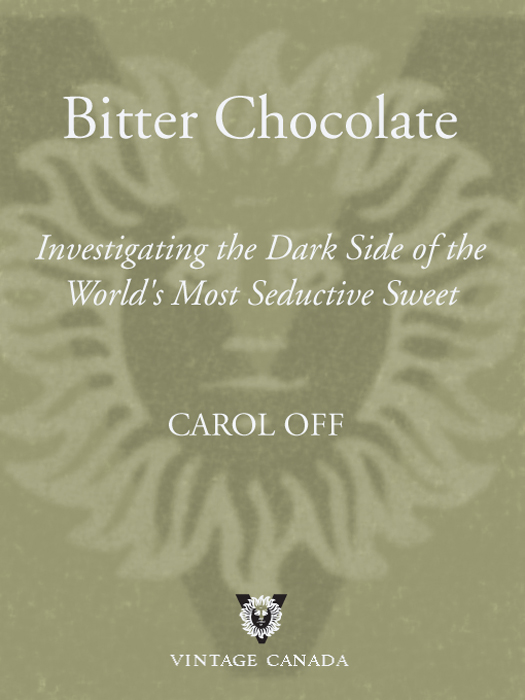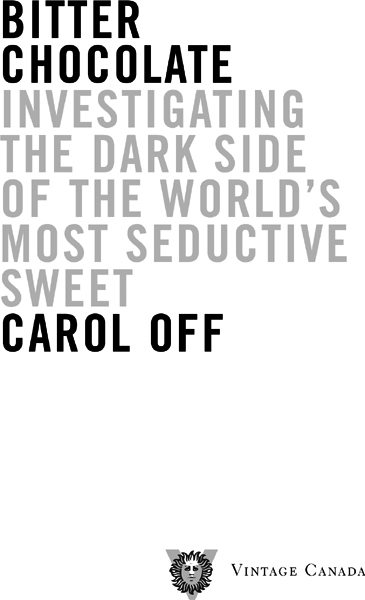ALSO BY CAROL OFF
The Lion, The Fox and The Eagle
The Ghosts of Medak Pocket
TO THE CHILDREN OF SINIKOSSON AND TO
GUY-ANDR KIEFFER, WHO GAVE HIS LIFE IN THE
PURSUIT OF THE TRUTH ABOUT THEIR WORLD
CONTENTS
Introduction
IN THE GARDEN OF GOOD AND EVIL
In my dreams I gorge on chocolates, I roll in chocolates, and their texture is not brittle but soft as flesh, like a thousand little mouths on my body, devouring me in fluttering small bites. To die beneath their tender gluttony is the culmination of every temptation I have known.
J OANNE H ARRIS , Chocolat
T HE BROAD HIGHWAY LEADING OUT OF THE CITY OF Abidjan is marked on the map of Cte dIvoire as a principal two-lane thoroughfare, but with the city behind us, it narrows quickly and degenerates into a potholed road no wider than a driveway. Tangled vines and shrubbery encroach on both sides of our vehicle while we push through what resembles a dark, leafy tunnel. Constant precipitationa perpetual cycle from warm mist to torrential thundershowers to steamseems to stimulate new jungle growth before my eyes.
Koffi Benot is at the wheel on this excursion into the unknown. Hes an unflappable Ivorian, and I would trust him in any situation. Ange Aboa is our principal guide into la brousse, as he calls itthe bush. Ange is a reporter for the Reuters news agency and spends much of his time in Cte dIvoires backcountry trying to make some sense of the murky, muddled world of African business. Together, we travel west out of Abidjan, deep into the tropical forests and remote farm country that stretches for hundreds of kilometres towards the Liberian border. Our mission is to seek out the truth about Cte dIvoires most precious commodity, cocoa.
My two companions know the bush country well, but they are perpetual strangers here where people trust only their own clans. We need help from local residents if we are to penetrate the walls of history and vegetation and probe the mysteries within. In a small village, we meet up with Nol Kabora, a seasoned pisteur who travels the tiny pistes, or back trails, every day as he makes his rounds of farms, gathering sacks of cocoa beans from the farmers. Abandoning the relative comfort of Benots Renault for Nols dilapidated truck, we turn off the highway and head deep into the bush. Ange has moved to the back of the truck to chat with some local people while I sit in the cab with Nol. Benot decides to stay behind and have tea with some newfound friends.
Nearly half of all the cocoa in the world comes out of this humid West African jungle and eventually finds its way into the confections that enrich the diets and the moods of chocolate lovers around the world. The bonbons, truffles, hot chocolate, cookies, cakes, ice cream sundaes and the ubiquitous chocolate bars; the sweet morsels that ostensibly say, I love you on Valentines Day, Merry Christmas, Happy Birthday, the Halloween treats; the Easter eggsthey started the long journey into our stomachs and our ceremonies here in this tropical hothouse. Yet I could not be farther away from those cherished ceremonies of life, the pageants of celebration and happiness in the developed world, than I am driving along these rutted paths through the jade-coloured forests of Cte dIvoire.
Nol points out the cocoa groves tucked in among the tall banana trees, the mangoes and the palms. Exotic green, yellow and red cocoa pods, the size of butternut squash, cling precariously to the smooth trunks of the trees called, in Latin, Theobroma cacaofood of the gods. Farmers lop the ripe pods from the bark with machetes and split them open to harvest the riches within: dozens of grey-purple seeds the size of almonds embedded in pale tan-coloured pulp. Through the bushes, we can see the racks and mats where the contents of the pods are piled up to ferment for days in the humid heat, producing a marvellous alchemy in which the seeds steep in the sweet, sticky juice from the pulp while sweltering in the hot tropical sun.
Micro-organisms in the fetid pile go to work, stirring into action about four hundred different chemicals and organic substances that magically transform a bland bean into the raw material that is the essence of the worlds most seductive sweet. After five or six days of malodorous mulling, the beans are then laid out on racks to dry. This delicate series of operations, augmented by manufacturing techniques, has made chocolate addicts out of millions of people around the world throughout history. Children invest meagre allowances for just a bite of it; some women say they prefer fine chocolate to sex; and modern science claims for chocolate myriad potential health benefits, from reducing cholesterol to boosting libido. Chocolate is the embodiment of temptation. It creates a mysterious addiction, which, in turn, sustains a vast international trade and an industry with a seemingly insatiable appetite for raw product. For their survival, the captains of the chocolate industry depend on these remote farms and the pisteurs who make daily excursions into the bush, gathering sacks of carefully fermented and dried cocoa beans.
Nol expertly navigates a mind-boggling road that seems at times to disappear completely. He points towards the tops of hills where groves of cocoa trees grope for sunlight and comments knowingly on the quality of each farmers produce, noting the ones who have perfected drying and fermenting and castigaing those whose beans are always dirty. From time to time, we can see a little one-room schoolhouse or tiny chapel surrounded by the poor mud houses of the people who cultivate the food of the gods.
Farmers in this region have been growing the worlds cocoa for a relatively short timesince the 1970s and 80s, when Cte dIvoires benevolent dictator and founding father, Flix Houphout-Boigny, realized that this fecund farmland could grow a botanical equivalent of gold. He wanted to transform his post-colonial country, just reclaimed from France, into the economic engine of West Africa. In the 1960s Houphout-Boigny announced that he would turn the jungle into Eden and everyone who lived here would enjoy the fruits of their own labour. The creationist vision worked and, for a time, Cte dIvoire became arguably the most profitable and stable country on the continent, mostly through providing the world with cocoa. All that has changed.
Le Vieux, as Ivorians affectionately called Houphout-Boigny, was the nations strongman, and when he died in 1993 the mantle of power passed to men of much lesser vision and much greater avarice. Cte dIvoire has been sliding into chaos and violence ever since, particularly in the coveted cocoa groves, where a low-grade war continues, despite ceasefires, to reduce this paradise to purgatoryand sometimes hell. Much of the fighting is over ownership of cocoa-producing land, as conflicting armies and paramilitaries vie for control of Cte dIvoires immense agricultural wealth. All of those involved in cocoa production are under constant threat of attack.
Nol Kabora is wary as he makes his rounds, gathering jute bags full of cocoa for shipment out of the great ports of the Gulf of Guinea to factories and, ultimately, the candy counters of North America and Europe. At regular intervals along the trail I see the sacks stacked hopefully, despite the menace. Ultimately, war doesnt interrupt a commercial venture that seems to be the economic salvation of everyone around here. Soldiers are paid with cocoa profits, and they know enough not to impede its movement. But that doesnt prevent the armed militiamenwho are everywherefrom augmenting their incomes through extortion. We encounter numerous roadblocks with demands for special fees. We hand over money to armed thugs who reek of cheap palm wine and do nothing to conceal their contempt for a foreigner such as myself, though Nol says he faces their loathing every day. He too is a foreigner, from the neighbouring country of Burkina Faso, and as such he is often the subject of both racism and robbery by armed forces.


